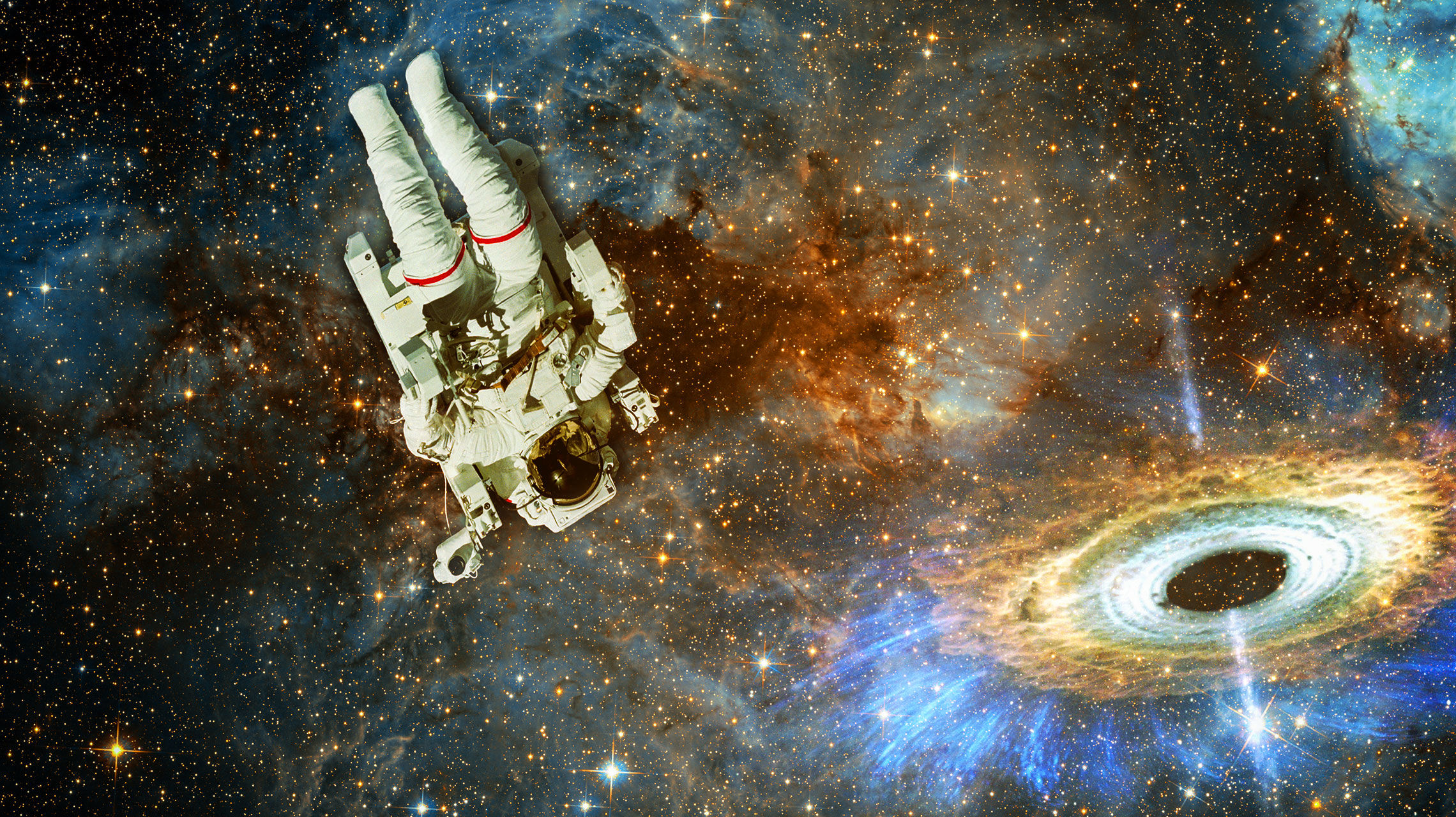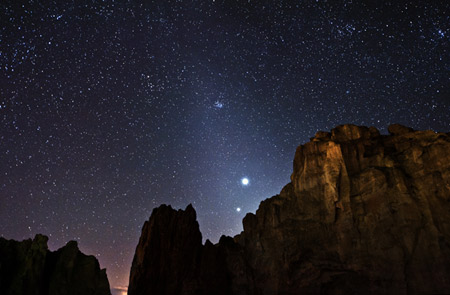Create a free profile to get unlimited access to exclusive videos, sweepstakes, and more!
The softly glowing zodiac: lesson learned

Every day I post a short, pithy astronomy or space fact on Twitter and Google+. I call them BAFacts, and I have them all archived here on the blog. I try to make them as accurate as possible within the limitation of 140 characters. But I wrote one recently that, as it turns out, I had to retract for being incorrect. And I'm happy about it! Here's why.
I recently was going through old posts and saw one that mentioned zodiacal light, a very faint glow in the sky that can only be seen on very dark nights. It's a band of light that follows the path of the planets across the sky, which is technically called the ecliptic. It passes through the constellations of the zodiac, hence its name*.
This picture of the zodiacal light is by friend of the BABlog Brad Goldpaint [click to embiggen, and note this is a part of a larger shot that's breathtaking]. The two bright "stars" are Venus and Jupiter, and you can see the glow from zodiacal light reaching up and to the left, following the ecliptic.
The origin of zodiacal light (when I learned about it, years ago) was thought to be dust from asteroid collisions. Asteroids out past Mars orbit pretty much in the same plane as the planets. When they smack into each other - and they do - they make dust. This reflects sunlight, so we'd see it as a faint band of light across the ecliptic. Case closed!
Of course, regular readers know me better than this. Read on!
So I wrote up a BAFact and tweeted it:
It says, "#BAFact: Zodiacal light is sunlight reflecting dimly on wreckage from asteroid collisions. http://t.co/wZnQBZOY", and the link goes to the article I wrote a while back mentioning zodiacal light.
Once it was up, I went on my merry way... for like three minutes. Luke Dones, who follows me on Twitter, tweeted this:
"@BadAstronomer: Dust in zodiacal cloud is now thought to be mostly from comets." The link he posted goes to an article in Science magazine (that link is no longer working, so instead I direct you to the paper posted on arXiv). That article also links to a professional astronomical journal paper, and sure enough, Luke was right. The researchers found that asteroid collisions cannot explain zodiacal light on their own. Not even close!
In fact, it looks like the majority of the reflected sunlight comes from particles created when comets disintegrate as they orbit the Sun (comets are mostly ice, rock, and dust; when the ice burns away from the Sun's heat, they can disintegrate completely). These comets all would need relatively short orbital periods (less than about 20 years) and stick to the plane of the solar system. These are called Jupiter Family Comets, because their orbits will have been heavily influenced by that giant planet's gravity over time.
Well! What's a good scientist and blogger to do? Answer: correct the previous tweet and thank Luke. So I did:
... immediately followed by:
This is one of the many, many reasons I love science. I was wrong, because something I had learned a while ago had been updated by more recent research. When called out on it, I wound up learning something! And not just something small, but actually a fact about our solar system of which I wasn't previously aware, a component that had an entirely different cause than I had once thought!
How awesome is that? It's not often you get a whole new view opening up like that for you, to be able to see an old thing in a new light. Science is a wonderful tool for this, letting your knowledge get ever-closer to reality. It helps you see, and sometimes it lets the scales fall from your eyes. I don't know of any better way to have that happen.
Image credit: Brad Goldpaint.
* This isn't a coincidence. The zodiac is made up of constellations through which the Sun appears to move as the Earth goes around it. Since the planets orbit the Sun in more or less the same plane as the Earth, they follow roughly the same path the Sun does.































